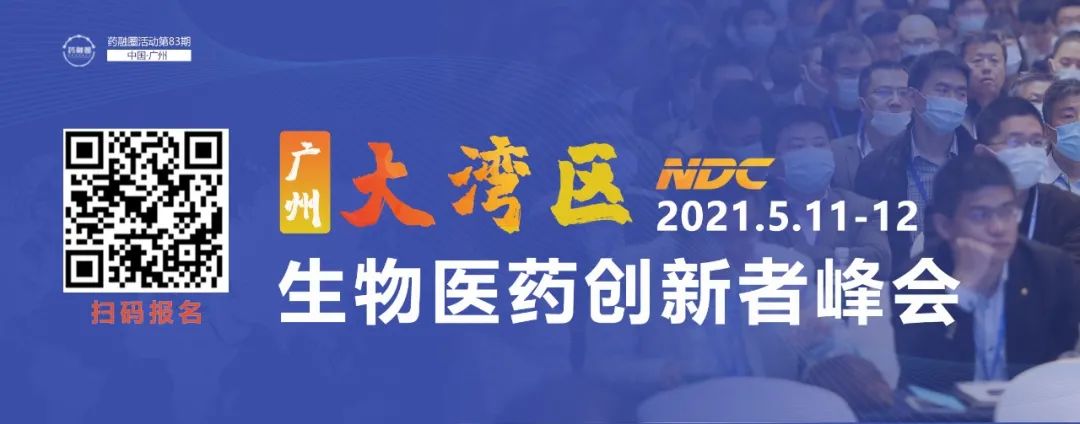预约演示
更新于:2025-05-07
Yinhua Miyanling Tablets
银花泌炎灵片
更新于:2025-05-07
概要
基本信息
原研机构 |
在研机构 |
非在研机构- |
权益机构- |
最高研发阶段批准上市 |
首次获批日期 中国 (2020-03-19), |
最高研发阶段(中国)批准上市 |
特殊审评- |
登录后查看时间轴
关联
2
项与 银花泌炎灵片 相关的临床试验CTR20160209
银花泌炎灵片治疗Ⅲ型前列腺炎(湿热下注证)的随机、双盲、阳性药及安慰剂平行对照、多中心临床试验
以阳性药及安慰剂为对照,进一步评价银花泌炎灵片治疗Ⅲ型前列腺炎(湿热下注证)的有效性与安全性,为产品的注册申请提供依据。
开始日期2016-08-24 |
申办/合作机构 |
CTR20131073
银花泌炎灵片治疗Ⅲ型前列腺炎(湿热下注证)有效性、安全性的随机、双盲、剂量平行对照、多中心临床试验
初步评价银花泌炎灵片治疗Ⅲ型前列腺炎(湿热下注证)的有效性和安全性,同时对本品剂量及疗程进行探索,为Ⅲ期临床试验提供依据。
开始日期2014-05-26 |
申办/合作机构 |
100 项与 银花泌炎灵片 相关的临床结果
登录后查看更多信息
100 项与 银花泌炎灵片 相关的转化医学
登录后查看更多信息
100 项与 银花泌炎灵片 相关的专利(医药)
登录后查看更多信息
3
项与 银花泌炎灵片 相关的文献(医药)2024-06-01·Phytomedicine
Novel applications of Yinhua Miyanling tablets in ulcerative colitis treatment based on metabolomics and network pharmacology
Article
作者: Wang, Caixia ; Liu, Hanlin ; Li, Zhuoqiao ; Wu, Junzhe ; He, Shanmei ; Yu, Hui ; Liu, Jinping ; Gao, Peng ; Wang, Qianyun ; Lv, Haoming ; Tang, Daohao
2022-05-01·Annals of Palliative Medicine
A multicenter, double-blind, placebo-controlled parallel study to evaluate the role of Yinhua Miyanling tablets in the prevention of bacterial biofilm formation on ureteral stents: a randomised trial
Article
作者: Zhang, Yong ; Qiao, Ludong ; Li, Jun ; Chen, Shan ; Cui, Liang ; Chen, Yuan ; Du, Zhen ; Yang, Weimin ; Wu, Wenqi ; Wang, Wenying
2019-06-01·Zhongguo Zhong yao za zhi = Zhongguo zhongyao zazhi = China journal of Chinese materia medica
[Clinical and fundamental research Yinhua Miyanling Tablets in treating urinary tract infection].
Article
作者: Sun, Yue ; Zhang, Wen-Ting ; Zhao, Qi-Han ; Han, Shuai-Jie ; Xiong, Min ; Miao, Run-Pei ; Yang, Han-Wen ; Wang, Yao-Xian ; Yu, Guo-Yong
3
项与 银花泌炎灵片 相关的新闻(医药)2022-05-29
近年来,我国泌尿系统疾病患病率翻倍增长,泌尿系统感染药物的市场规模达到近百亿元级别。2016-2020年,中成药在泌尿系统感染用药的市场份额均超53%,院内及药店终端市场都有大品牌处方药的身影,三金片、热淋清颗粒等常年高居榜单前列。尿路感染中成药市场保持稳健发展,TOP5品牌市占率稳中带升。
泌尿系“下三路”市场需求扩容,用药市场稳健增长
临床上常见的泌尿系“下三路”疾病包括肾盂肾炎、尿道炎、膀胱炎、前列腺炎及前列腺增生等。其中,最为主要的是尿路感染和前列腺疾病。
泌尿系统疾病随着患病率和诊疗率上升,催生市场需求扩容。泌尿系统疾病两周患病率和慢性病患病率绝对值虽然不及心脑血管、糖尿病等大病种,患者人数也不像心脑血管、糖尿病等疾病动辄数以亿计,但患病率及诊疗率提升较快,患者人数也快速增长。
患病率方面,根据《2021年我国卫生健康统计年鉴》显示,2008年至2018年我国居民泌尿生殖系统疾病患病率接近翻倍的增长,其中两周患病率由2008年的6.6‰增长至2018年的10.3‰,慢性疾病患病率则由9.3‰爬升至16.3‰。
诊疗率方面,泌尿系统疾病患者的就诊率和住院率保持增长。根据《2021年我国卫生健康统计年鉴》显示,我国泌尿系统患者就诊率由2008年的6.4‰上升至2018年的9.6‰;住院率则由2008年的3.9‰翻倍上升至2018年的8.2‰。
随着市场需求的增长,我国泌尿系统感染药物市场销售额相应地呈现上升趋势。2016-2019年我国泌尿系统感染药物(不包括广谱抗感染药)市场销售额逐步攀升,2020年由于新型冠状病毒肺炎疫情的影响,各类疾病的门诊量和住院人数出现下降,因此市场销售额出现一定程度的下滑。即便如此,2020年我国泌尿系统感染药物的市场规模(中国公立医疗机构终端+中国城市实体药店终端,下同)仍接近百亿元,复合增长率超过5%。
2016-2020年我国泌尿系统感染药物市场销售额及成长性
注:①本文泌尿系统药物市场只包括尿路感染用药市场和前列腺疾病用药市场,其中尿路感染用药市场只包括中成药,前列腺疾病用药市场包括中成药及化学药。②销售额以市场的实际零售价计算。下同。
来源:米内网数据库
中成药增速略逊化学药,但独到优势不可替代
2016年至2020年我国泌尿系统感染用药市场总体以中成药为主,占比保持在五成以上,化学药在五成以下。但根据发展趋势看,有走向“二一添作五”的趋势,由于化学药总体增速要优于中成药,因此化学药市场份额呈现逐年上升之势,中成药市场份额呈下滑之势。
2016-2020年中国公立医疗机构及中国城市实体药店终端泌尿系统感染中成药、化学药销售额占比
来源:米内网数据库
尽管如此,中成药在我国泌尿系统感染用药市场仍具主导地位,有无可替代的优势。中成药是我国历代医药学家以中草药为原料,经过千百年医疗实践创造、总结有效方剂的精华。传统的中成药包括丸、散、膏、丹各种剂型,通过与现代制药工艺结合,改变了传统中成药服用不便的劣势。与化学药相比,中成药具有性质温和、不良反应小、无耐药性等优点,对于泌尿系感染大多需要长期服药的患者来说较为友好。根据文献资料研究显示,中成药在临床治疗尿路感染和前列腺炎疾病起着重要的辅助作用,与化学药联合使用时,不但缩短了疗程、有效地降低了白细胞含量,减少耐药性及副作用的发生,而且对于体质较弱的病人起到良好的调理作用。
泌尿系统感染中成药大品牌在院内和零售的情况大有不同
我国泌尿系统感染中成药市场中,医疗机构院内市场和实体药店市场的主要品牌大不相同。处方药大品种也可以在实体药店市场做大做强;OTC产品在以处方药为主的院内市场也可以有“春天”。
在中国公立医疗机构终端市场,大品牌以处方药品种为主,但排名第三的三金片由于价格便宜以及多年的口碑积累,在医院市场的份额也呈现扩大之势。2017-2019年排在市场第一的是贵州威门药业的热淋清颗粒,2020年由于受到新型冠状病毒肺炎疫情的影响,热淋清颗粒市场销售额有所下降,排名下滑至第二位,保定天浩制药的前列舒通胶囊则攀升至第一位。
2016-2020年中国公立医疗机构终端泌尿系统感染中成药主要品牌市场份额
注:①销售额以产品的市场零售价计。②按2020年市场份额大小排名。下同。
来源:米内网中国公立医疗机构终端竞争格局
在药店市场中,处方药也有绽放的机会。2020年中国城市实体药店终端泌尿系统感染中成药产品排名中,银花泌炎灵片、前列舒通胶囊和复方石韦胶囊跻身其中,这三个均是处方药品牌,可见处方药品牌在处方外流的大背景下,企业只要做好相应的渠道管理、加强市场推广活动也是有机会在院外市场取得较好的成绩。在双通道、中成药集采等政策的影响下,相信将会有越来越多的中成药处方药转战零售市场。
品牌排名中,排在首位的桂林三金药业三金片为OTC品种,具有绝对优势,市场份额一直维持在20%以上。吉林华康药业处方药品种银花泌炎灵片则排名第二,市场份额维持在10%以上,并呈现逐步扩大之势,是该领域药店终端表现最好的处方药品种。
2016-2020年中国城市实体药店终端泌尿系统感染中成药主要品牌市场份额
来源:米内网中国城市实体药店终端竞争格局
尿路感染中成药市场稳健,大品牌销售额稳中有升
尿路感染(UTI)是临床常见的泌尿系感染性疾病,可发生于所有人群,多见于女性,尤其是育龄期妇女。女性尿路感染发生率比男性高9倍。大多数妇女在其一生中会发生2次或多次泌尿系感染。复发性尿路感染也很常见,约一半无并发症未经治疗自然痊愈的尿路感染妇女,会在第一年内发展成为复发性的尿路感染。在Finnish的研究中,17~82岁患大肠杆菌性膀胱炎的妇女,44%初次感染后第一年内复发,其中55岁以上复发率为53%,年轻妇女复发率36%。老年妇女流行病学资料很少,估计60岁以上的妇女有10%~15%的几率频繁发生尿路感染。
在临床上,尿路感染中成药多属祛湿通淋类药物,常用的有热淋清颗粒、三金片、癃闭舒胶囊、癃清片、宁泌泰胶囊、泌淋清胶囊等,这类药物主要治疗下焦湿热所致癃症、淋症、闭症及结石、前列腺炎、乳糜尿等疾病。我国尿路感染用药市场销售额较为稳定,2016-2020年均在30-35亿元之间,年均增速超2%。
我国尿路感染用中成药市场份额前五品牌中,大品牌的市场份额稳中有升、强者恒强。TOP5品牌中,桂林三金药业的三金片和贵州威门药业的热淋清颗粒在2016-2020年的市场份额均稳定在10%以上。
具体来看,三金片在尿路感染用药市场、泌尿系统感染中成药市场中均排第1位,在泌尿系统感染用药市场中稳定在第3位。尽管受到2020新型冠状病毒肺炎疫情的影响,但其同时为基本药物目录品种和OTC品种,总体受到的影响较小,稳居市场前列;排第2位的热淋清颗粒2016至2020年市场销售额保持稳定,在3-5亿元之间波动,尿路感染用药市场、泌尿系统感染中成药市场中的排名分别为第2位和第3位,在泌尿系统感染用药市场中稳定在第5、第6位。2020年受新型冠状病毒肺炎疫情的影响,热淋清颗粒市场销售额出现较大幅度的下滑,但市场份额仍居前列。
2016-2020年中国公立医疗机构及中国城市实体药店终端尿路感染中成药主要品牌市场份额
来源:米内网数据库
注:米内网中国城市实体药店终端竞争格局数据库是覆盖全国297个地市及以上城市实体药店(不含县乡村实体药店),对全品类进行连续监测的放大版城市实体药店数据库。上述销售额以产品在终端的平均零售价计算。
2022-05-28
·米内网
精彩内容近年来,我国泌尿系统疾病患病率翻倍增长,泌尿系统感染药物的市场规模达到近百亿元级别。2016-2020年,中成药在泌尿系统感染用药的市场份额均超53%,院内及药店终端市场都有大品牌处方药的身影,三金片、热淋清颗粒等常年高居榜单前列。尿路感染中成药市场保持稳健发展,TOP5品牌市占率稳中带升。泌尿系“下三路”市场需求扩容,用药市场稳健增长临床上常见的泌尿系“下三路”疾病包括肾盂肾炎、尿道炎、膀胱炎、前列腺炎及前列腺增生等。其中,最为主要的是尿路感染和前列腺疾病。泌尿系统疾病随着患病率和诊疗率上升,催生市场需求扩容。泌尿系统疾病两周患病率和慢性病患病率绝对值虽然不及心脑血管、糖尿病等大病种,患者人数也不像心脑血管、糖尿病等疾病动辄数以亿计,但患病率及诊疗率提升较快,患者人数也快速增长。患病率方面,根据《2021年我国卫生健康统计年鉴》显示,2008年至2018年我国居民泌尿生殖系统疾病患病率接近翻倍的增长,其中两周患病率由2008年的6.6‰增长至2018年的10.3‰,慢性疾病患病率则由9.3‰爬升至16.3‰。诊疗率方面,泌尿系统疾病患者的就诊率和住院率保持增长。根据《2021年我国卫生健康统计年鉴》显示,我国泌尿系统患者就诊率由2008年的6.4‰上升至2018年的9.6‰;住院率则由2008年的3.9‰翻倍上升至2018年的8.2‰。随着市场需求的增长,我国泌尿系统感染药物市场销售额相应地呈现上升趋势。2016-2019年我国泌尿系统感染药物(不包括广谱抗感染药)市场销售额逐步攀升,2020年由于新型冠状病毒肺炎疫情的影响,各类疾病的门诊量和住院人数出现下降,因此市场销售额出现一定程度的下滑。即便如此,2020年我国泌尿系统感染药物的市场规模(中国公立医疗机构终端+中国城市实体药店终端,下同)仍接近百亿元,复合增长率超过5%。2016-2020年我国泌尿系统感染药物市场销售额及成长性注:①本文泌尿系统药物市场只包括尿路感染用药市场和前列腺疾病用药市场,其中尿路感染用药市场只包括中成药,前列腺疾病用药市场包括中成药及化学药。②销售额以市场的实际零售价计算。下同。来源:米内网数据库中成药增速略逊化学药,但独到优势不可替代2016年至2020年我国泌尿系统感染用药市场总体以中成药为主,占比保持在五成以上,化学药在五成以下。但根据发展趋势看,有走向“二一添作五”的趋势,由于化学药总体增速要优于中成药,因此化学药市场份额呈现逐年上升之势,中成药市场份额呈下滑之势。2016-2020年中国公立医疗机构及中国城市实体药店终端泌尿系统感染中成药、化学药销售额占比来源:米内网数据库尽管如此,中成药在我国泌尿系统感染用药市场仍具主导地位,有无可替代的优势。中成药是我国历代医药学家以中草药为原料,经过千百年医疗实践创造、总结有效方剂的精华。传统的中成药包括丸、散、膏、丹各种剂型,通过与现代制药工艺结合,改变了传统中成药服用不便的劣势。与化学药相比,中成药具有性质温和、不良反应小、无耐药性等优点,对于泌尿系感染大多需要长期服药的患者来说较为友好。根据文献资料研究显示,中成药在临床治疗尿路感染和前列腺炎疾病起着重要的辅助作用,与化学药联合使用时,不但缩短了疗程、有效地降低了白细胞含量,减少耐药性及副作用的发生,而且对于体质较弱的病人起到良好的调理作用。泌尿系统感染中成药大品牌在院内和零售的情况大有不同我国泌尿系统感染中成药市场中,医疗机构院内市场和实体药店市场的主要品牌大不相同。处方药大品种也可以在实体药店市场做大做强;OTC产品在以处方药为主的院内市场也可以有“春天”。在中国公立医疗机构终端市场,大品牌以处方药品种为主,但排名第三的三金片由于价格便宜以及多年的口碑积累,在医院市场的份额也呈现扩大之势。2017-2019年排在市场第一的是贵州威门药业的热淋清颗粒,2020年由于受到新型冠状病毒肺炎疫情的影响,热淋清颗粒市场销售额有所下降,排名下滑至第二位,保定天浩制药的前列舒通胶囊则攀升至第一位。2016-2020年中国公立医疗机构终端泌尿系统感染中成药主要品牌市场份额注:①销售额以产品的市场零售价计。②按2020年市场份额大小排名。下同。来源:米内网中国公立医疗机构终端竞争格局在药店市场中,处方药也有绽放的机会。2020年中国城市实体药店终端泌尿系统感染中成药产品排名中,银花泌炎灵片、前列舒通胶囊和复方石韦胶囊跻身其中,这三个均是处方药品牌,可见处方药品牌在处方外流的大背景下,企业只要做好相应的渠道管理、加强市场推广活动也是有机会在院外市场取得较好的成绩。在双通道、中成药集采等政策的影响下,相信将会有越来越多的中成药处方药转战零售市场。品牌排名中,排在首位的桂林三金药业三金片为OTC品种,具有绝对优势,市场份额一直维持在20%以上。吉林华康药业处方药品种银花泌炎灵片则排名第二,市场份额维持在10%以上,并呈现逐步扩大之势,是该领域药店终端表现最好的处方药品种。2016-2020年中国城市实体药店终端泌尿系统感染中成药主要品牌市场份额来源:米内网中国城市实体药店终端竞争格局尿路感染中成药市场稳健,大品牌销售额稳中有升尿路感染(UTI)是临床常见的泌尿系感染性疾病,可发生于所有人群,多见于女性,尤其是育龄期妇女。女性尿路感染发生率比男性高9倍。大多数妇女在其一生中会发生2次或多次泌尿系感染。复发性尿路感染也很常见,约一半无并发症未经治疗自然痊愈的尿路感染妇女,会在第一年内发展成为复发性的尿路感染。在Finnish的研究中,17~82岁患大肠杆菌性膀胱炎的妇女,44%初次感染后第一年内复发,其中55岁以上复发率为53%,年轻妇女复发率36%。老年妇女流行病学资料很少,估计60岁以上的妇女有10%~15%的几率频繁发生尿路感染。在临床上,尿路感染中成药多属祛湿通淋类药物,常用的有热淋清颗粒、三金片、癃闭舒胶囊、癃清片、宁泌泰胶囊、泌淋清胶囊等,这类药物主要治疗下焦湿热所致癃症、淋症、闭症及结石、前列腺炎、乳糜尿等疾病。我国尿路感染用药市场销售额较为稳定,2016-2020年均在30-35亿元之间,年均增速超2%。我国尿路感染用中成药市场份额前五品牌中,大品牌的市场份额稳中有升、强者恒强。TOP5品牌中,桂林三金药业的三金片和贵州威门药业的热淋清颗粒在2016-2020年的市场份额均稳定在10%以上。具体来看,三金片在尿路感染用药市场、泌尿系统感染中成药市场中均排第1位,在泌尿系统感染用药市场中稳定在第3位。尽管受到2020新型冠状病毒肺炎疫情的影响,但其同时为基本药物目录品种和OTC品种,总体受到的影响较小,稳居市场前列;排第2位的热淋清颗粒2016至2020年市场销售额保持稳定,在3-5亿元之间波动,尿路感染用药市场、泌尿系统感染中成药市场中的排名分别为第2位和第3位,在泌尿系统感染用药市场中稳定在第5、第6位。2020年受新型冠状病毒肺炎疫情的影响,热淋清颗粒市场销售额出现较大幅度的下滑,但市场份额仍居前列。2016-2020年中国公立医疗机构及中国城市实体药店终端尿路感染中成药主要品牌市场份额来源:米内网数据库文章内容根据广州标点医药信息股份有限公司米内网推出的《我国医药行业发展概况及泌尿系统感染用药市场研究报告(2021版)》整理,如需了解更详细的数据及报告内容,具体咨询关前书,电话:02037886785。注:米内网中国城市实体药店终端竞争格局数据库是覆盖全国297个地市及以上城市实体药店(不含县乡村实体药店),对全品类进行连续监测的放大版城市实体药店数据库。上述销售额以产品在终端的平均零售价计算。本文为原创稿件,转载请注明来源和作者,否则将追究侵权责任。投稿及报料请发邮件到872470254@qq.com稿件要求详询米内微信首页菜单栏商务及内容合作可联系QQ:412539092
2021-03-19
·药融圈
▲限时免费参会名额倒计时🔥,1600+已报名
注:本文不构成任何投资意见和建议,以上市公司公告为准;本文仅作医疗健康相关药物介绍,非治疗方案推荐(若涉及)。
长春高新(000661)于2021年3月11日晚间,发布年度业绩报告,2020年归属于上市公司股东的净利润约为30.47亿元,同比增长71.64%;营业收入约为85.77亿元,同比增长16.31%。
来源:长春高新2020年度报告
子公司金赛药业实现收入58.03亿元,同比增长20.34%。其中2020年单Q4实现收入15.54亿元,净利润7.71亿元。
金赛药业为国内在“生长激素赛道”具备了全产品管线生产能力的企业,具体包括粉针、水针及长效针,可满足不同经济能力患者的治疗需求。
2020年生长激素领域:水针占比营收77%,长效占比营收12%,粉针营收占比11%;水针同比增长20%、粉针19%、长效29%。促卵泡激素约2.7亿,略有增长。现阶段带状疱疹已经在三期的总结,有望2023年获批上市。
子公司百克生物实现收入14.33亿元,同比增长43.30%。其中2020年单Q4实现收入3.58亿元,净利润0.75亿元。水痘疫苗市场份额独占鳌头,鼻喷流感疫苗获批上市,批签发157万瓶,估计实现收入约4亿元。水痘疫苗获得批签发883.02万人份,较上年批签发数量增加23.33%,2021年预计签发300-400万人份。科创板上市敲钟在即。
子公司华康药业实现收入5.83亿元,同比增长0.45%;子公司高新地产实现收入7.25亿元,同比下降23.00%。
2020年长春高新经营业绩实现大幅增长的原因主要在于:2019年实施重大资产重组,于2019年11月完成了对金赛药业29.5%少数股东股权的收购,金赛药业作为公司核心子公司,2020年营业收入占据长春高新的大半壁江山,生长激素管线四季度持续增长,大幅度提高了公司业绩,驱动力在于生长激素渠道的拓展,预计随着渠道的拓宽,业绩会进一步增长。
来源:长春高新2020年度报告
另一方面,百克生物鼻喷流感疫苗产品和水痘疫苗获得批签大增,为公司业绩贡献增量。
关于长春高新
1993年6月,长春高新技术产业(集团)股份有限公司由长春高新技术产业发展总公司独家发起设立,总股本13750万股。1996年12月18日,公司股票在深圳证券交易所挂牌上市,是东北地区最早的一批上市公司之一。
上市20余年来,长春高新从公司成立之初的以高新区基础设施建设为主成功转型,成为一家专注于医药科技创新领域,实施产业投资的企业集团。公司经营业绩持续增长,2017、2018年在全国医药工业百强排名分别为73、56名。
公司主营业务为生物制药及中成药的研发、生产和销售,辅以房地产开发、物业管理和服务等业务。经过多年的产业布局和研发投入,医药产品覆盖创新基因工程制药、新型疫苗、现代中药等多个医药细分领域,是公司业绩的主要来源。房地产业务进行有计划的土地储备,立足特色地产开发与经营。
产品管线
公司目前重点研发项目38个,申报待批准项目1个,临床试验项目16个,申报临床试验待批准项目1个,临床研究项目14个,仿制药研究项目6个。
重点在研产品
金赛药业:
儿科产品方面,以生长发育为中心,积极拓展各重要领域。抗肿瘤产品中用于血液系统恶性肿瘤、晚期恶性实体瘤和淋巴瘤的金妥利珠单抗已启动国内临床试验,并获得美国FDA药物临床试验批准。
同时,加强与外部合作,引进甲磺酸亮丙瑞林、重组人促卵泡激素-CTP融合蛋白注射液等项目,进一步增强公司在儿童健康、女性健康、生殖及肿瘤等领域的技术储备。
百克生物:
疫苗方面,抗狂犬病病毒的人用狂犬病疫苗(Vero细胞)冻干剂型产品Ⅲ期临床试验基本完成。
用于预防老年人带状疱疹及并发神经痛的带状疱疹减毒活疫苗产品Ⅲ期临床试验已有2.5万例受试者入组;吸附无细胞百白破(三组分)联合疫苗获批临床,如研发成功将使国内百白破疫苗完成升级换代,提升免疫效果、降低不良反应,并为公司以后开发多联疫苗打下基础。
截至2020年末,公司子公司重点研发项目临床进展情况如下:
来源:长春高新2020年度报告
旗下子公司
其中控股子公司金赛药业主营生长激素和促卵泡素,18年贡献利润占上市公司比例近80%。子公司百克生物主营水痘疫苗和狂犬疫苗等,华康药业主营中成药生产销售,另外还有地产业务,但是规模不大,详细情况如下:
▶ 金赛药业(基因工程制药)◀
金赛药业主要从事基因工程生物药品的研发、生产和销售,主要产品为注射用重组人生长激素(粉针剂)、重组人生长激素注射液(水针剂)、聚乙二醇重组人生长激素注射液(长效水针剂)等人生长激素系列产品及辅助生殖、妇女健康等领域产品。
主要产品:
▶ 百克生物(生物疫苗)◀
百克生物主要从事人用疫苗的研发、生产和销售,目前已有水痘疫苗、狂犬疫苗以及冻干鼻喷流感疫苗三种已获批的疫苗产品,同时还拥有12项在研疫苗和2项在研的用于传染病防控的全人源单克隆抗体,主要包括带状疱疹减毒活疫苗、吸附无细胞百白破(三组分)联合疫苗、b型流感嗜血杆菌结合疫苗、全人源抗狂犬病单克隆抗体、全人源抗破伤风毒素单克隆抗体等。
主要产品:
▶ 华康生物(中成药)◀
华康药业主要从事中药的研发、生产和销售,涵盖心脑血管、中药抗炎及妇儿等产品线,主要产品包括血栓心脉宁、银花泌炎灵、疏清颗粒、清胃止痛微丸等。
主要产品:
结 语
长春高新未来将继续依托本土的生长激素的龙头地位的优势,具有品牌和渠道优势。坚守以医药为主、房地产为辅的产业发展定位。坚持在医药领域的技术创新,积极寻求外部国际市场的合作,加速国际化进程。在拟合作项目方面,做好拟投国际化合作项目论证、谈判和前期准备工作。为了进一步拓宽融资渠道,增强竞争能力,将计划拆分子公司百克生物,推进子公司百克的上市工作,本次拆分主要专注于传染病防治,将在产品、新工艺技术方面进行布局,将以研发驱动的疾病防治为主。
更多信息,请扫免费注册的药融云数据或网站www.pharnexcloud.com
参考:
NMPA/CDE;
药融云数据,www.pharnexcloud.com;
FDA/EMA/PMDA;
长春高新公司官网
相关公司公开披露;
长春高新2020年报;
长春百克招股书;
等等。
【关于药融圈】药融圈围绕我国生物医药产业链,针对生物医药大数据、技术和资本投资、药融园(产业园)等开展系列系统性工作,促进我国生物医药产业健康发展,完善产业链,共同面对全球合作和竞争。
点分享
点点赞点在看

财报疫苗合作抗体并购
100 项与 银花泌炎灵片 相关的药物交易
登录后查看更多信息
研发状态
批准上市
10 条最早获批的记录, 后查看更多信息
登录
| 适应症 | 国家/地区 | 公司 | 日期 |
|---|---|---|---|
| 肾盂肾炎 | 中国 | 2020-03-19 |
未上市
10 条进展最快的记录, 后查看更多信息
登录
| 适应症 | 最高研发状态 | 国家/地区 | 公司 | 日期 |
|---|---|---|---|---|
| 前列腺炎 | 临床3期 | 中国 | 2016-08-24 |
登录后查看更多信息
临床结果
临床结果
适应症
分期
评价
查看全部结果
| 研究 | 分期 | 人群特征 | 评价人数 | 分组 | 结果 | 评价 | 发布日期 |
|---|
No Data | |||||||
登录后查看更多信息
转化医学
使用我们的转化医学数据加速您的研究。
登录
或

药物交易
使用我们的药物交易数据加速您的研究。
登录
或

核心专利
使用我们的核心专利数据促进您的研究。
登录
或

临床分析
紧跟全球注册中心的最新临床试验。
登录
或

批准
利用最新的监管批准信息加速您的研究。
登录
或

特殊审评
只需点击几下即可了解关键药物信息。
登录
或

生物医药百科问答
全新生物医药AI Agent 覆盖科研全链路,让突破性发现快人一步
立即开始免费试用!
智慧芽新药情报库是智慧芽专为生命科学人士构建的基于AI的创新药情报平台,助您全方位提升您的研发与决策效率。
立即开始数据试用!
智慧芽新药库数据也通过智慧芽数据服务平台,以API或者数据包形式对外开放,助您更加充分利用智慧芽新药情报信息。
生物序列数据库
生物药研发创新
免费使用
化学结构数据库
小分子化药研发创新
免费使用
